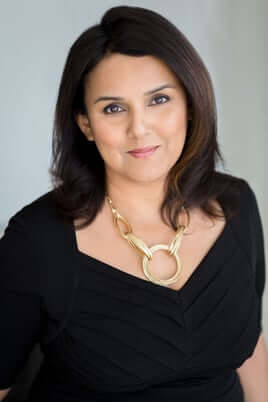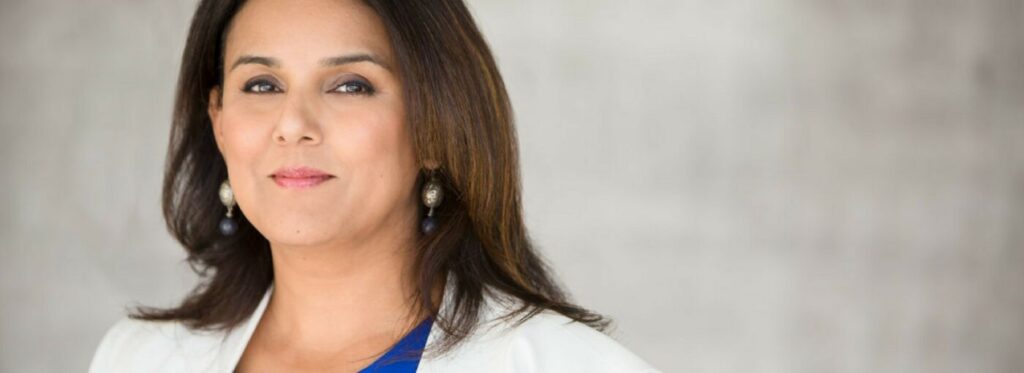Our personal brand impacts the way we are perceived in the workplace, the interactions we have with experts, and our career development. The question is not whether we should have a personal brand anymore but how we should cultivate it.
The behaviour, personality, core values and skills that we showcase online are part of our footprint, and they reflect how we are seen as individuals and as professionals. Dr. Tanvi Gautam, leadership coach, top 10 social media influencer and founder of Leadershift Inc., shares her tips for helping professionals build a strong personal brand online.
Hi Tanvi, you have founded LeaderShift Inc. to help leaders emerge on top in the age of disruption. A key pillar of it is to lead in the age of social and have a powerful personal brand. As a social media influencer, what are the top 3 suggestions you have for those aspiring to have a more powerful presence on social media?
There is a misconception out there that a personal brand is something of an outside-in job, i.e. that you decide your destination/goals and start building a brand towards that. The truth is, it is an inside-out job. Firstly, you need to identify who you are and what you stand for. With that at the core, you should start building your personal brand to celebrate and amplify your authenticity. So my first suggestion is to understand what you stand for.
Secondly, consistency is key. I find that many people pick up social media with enthusiasm and then drop it. You need visibility and credibility at the same time to be able to craft a strong personal brand on social media. Using technology to schedule posts, knowing which keywords you want to be associated with, and following the right influencers is easier than you may think.

Finally, find your tribe! Help them and watch your influence grow. It is a misconception that social media is about me, myself and I. That is the fastest way to alienate your audience and followers. Ask how you can add value to the tribe of people you want to grow a stronger relationship with. Community is at the heart of anyone wanting to have a strong personal brand on social media. When running Asia’s first internationally trending chat for leaders, we had CEOs, CLOs, and CHROs attending the chat – not because they have extra time to spare but because they understand that learning and leadership happens in communities,and social media makes this easier than before.
What are some common mistakes people make that ruin their personal brand on social media?
They don’t have a clear “why” for their presence on social media. Or worse still, they treat social media as a tool to ask for favors, sell relentlessly or promote their products/books. No one likes to be sold to, least of all by someone who shows up only when they need something. As Adam Grant, the famous Wharton Professor, says: “Give, give, give, ask.”
Be human! I look at some accounts and it feels like a Bot is running them. Even the senior leadership of companies outsources it to their PR or marketing departments. Why would you want someone else to speak for you? This is the age of leadership from in front of the firewall! Show up and lead your tribe. Stop automating to the point where you lose touch with the people around you. I am launching an online program this fall for leaders who want to truly understand the potential of social media without being overladen with jargon and tech speech. The pre-program interest is very heartening, so there is hope after all.
According to you, “the future of work is not about more technology in the workplace. It is about more humanity in the workplace” – can you tell us a bit more about this approach?
Technology provides us with the opportunity to reach our full potential as people. The real benefit of technology is to be able to to take over areas where the contribution includes analytics, predictive capabilities and routine tasks. The human touch is not easily replicated. I think that fears of robotization, while not unfounded, miss the potential of co-botosization, which is about the man-machine interface to create an optimal performance environment. The question we have to ask is not just what technology can do but what humans can do now that technology is reaching higher capabilities. And the answer to that is creating purpose drive, inclusive and creative work environments where potential can thrive.
One of your famous quotes is: “technology is the lowest form of competitive advantage.” What are your thoughts regarding technology in the workplace?
Technology can be bought, replicated, replaced. The advantages that stem from technology have a really short shelf life. Think about it, if every bank claims to be digital and every business says it is in the business of technology, what is the competitive differentiation? I have this technology today and you will have it by tomorrow. I might have a source code of something special but how do I not know that some kid in a garage is not designing a way to disrupt it over night? If you truly want to stand out as a corporate brand, you have to build competencies where the human touch and human experience are centric.

My focus on Corporate Storytelling is one such area where leaders are able to create a narrative that goes beyond the technology and feature-laden mindset that many leaders have come to adopt. When a company has a strong story at its core and people can connect with it, it does not matter whether today’s trend is cloud computing and tomorrow’s some other technology. Ultimately, technology is an enabler – a very good one but not the most sustainable one. Cutting-edge technology is necessary, but not sufficient, it’s a condition for enterprise success. When it comes to a competitive advantage, people with a cutting-edge mindset and companies with a cutting-edge culture will always supercede cutting-edge technology.
Why do you think that companies should put more effort into helping their employees build their thought leadership online?
It is about having your tribe speak for you. Trust is at an all-time low. People want to hear from real people. They trust their friends and networks more than they trust your brand. Your people have something to say, and helping them develop thought leadership capabilities and letting them shine speaks volumes for your brand. Most companies are too scared to think about what will go wrong, but I have to ask: what if it goes right ? There are systems and processes which, when put in place, can help you leverage Employee Advocacy at it best. Think of employees as brand ambassadors and you will be able to have a far greater reach for your brand than if you stuck with old and hierarchical methods of market outreach. Helping employees become ambassadors on social media via content creation and content sharing is a powerful way to build their thought leadership.
Dr. Tanvi Gautam, is the founder of Leadershift Inc, a global consulting & training firm helping leaders transition from the age of hierarchies to the age of networks. She is the winner of the Game changer award (Workforce Magazine, US), a TEDX speaker and Asia’s first certified business storytelling coach. She is quoted and published in Forbes.com, Harvard Business Review, Business Times, Economic Times, Business Manager. Follow her on Twitter.









